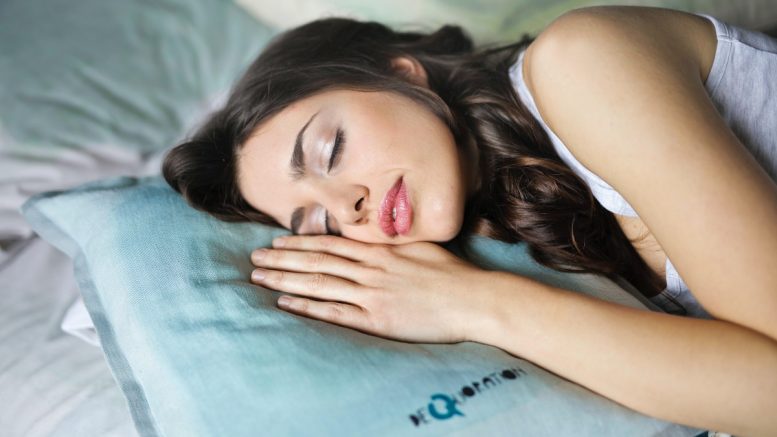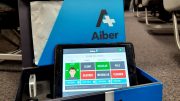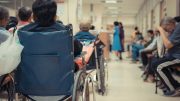Getting a good night’s sleep is the foundation of a healthy lifestyle, yet for many of us a restful night of quality sleep remains elusive. Insufficient sleep is a global problem, and it has serious implications for public health. To coincide with this year’s World Sleep Day we take a look at the major causes of sleep problems and the ways that technology can help us achieve healthier sleep.
Healthy Sleep
According to the Sleep Foundation adults between 18 and 64 should be getting between seven to nine hours of sleep per night, yet 35.2% of all adults in the U.S. report sleeping on average for less than seven hours per night.
Good sleep is necessary for good physical and mental health and a good quality of life. Insufficient sleep is a pervasive and prominent problem in the modern 24-hour society. A considerable body of evidence suggests that insufficient sleep causes a host of adverse medical and mental dysfunctions.
According to the International Classification of Sleep Disorders (ICSD-3), insufficient sleep is defined as a reduced sleep pattern that has persisted for at least three months for most days of the week, along with complaints of sleepiness during the day.
Frequently occurring episodes of insufficient sleep are associated with the experience of unfavourable mental and physical well-being.
Sleep insufficiency is sometimes confused with insomnia, but the opportunity to sleep differs in the two disorders (with insomnia sufferers typically being unable to sleep despite having opportunities to do so).
The technology of sleep
Given the extent of the global sleeping problem, and the negative impact that the global COVID-19 pandemic has had on people’s sleep, there is a growing need for ways to help people manage their sleep patterns.
Technology can play an extremely important role in this process. Wearables and devices that monitor sleep have vastly improved over recent years. Consumers now have the ability to gain clinical-grade data and insights that would have previously only been available from a professional sleep clinic.
Sleep analysis can now be performed in the convenience of someone’s own home using a range of different devices. Importantly, this can actually increase the accuracy of the sleep data, over and above the traditional clinic analysis, as it means that measurements are collected over a longer period of time. The convenience of these technologies also means that someone is measuring their sleep patterns in their own bed and their actual sleeping environment which also results in better overall results.
A sleep clinic in your own bedroom
Wearables that track sleep patterns have advance massively in the last 2-3 years. Where you would previously have had limited results from a sleep tracking watch, or similar device, today’s models include clinical grade monitoring sensors and provide you with actionable insights around a whole host of sleep issues.
The Withings ScanWatch, is one example of a device that includes advanced sleep monitoring capabilities. The watch tracks your sleep cycles (light and deep), duration of sleep, time to be asleep and wake up as well as interruptions, and logs it in the Withings Health Mate app so you can view your trends.
In addition, the ScanWatch also boasts a medical-grade ECG, and a oximeter for SpO2 measurements. The ECG is marketed as clinical grade and have been validated by the Hopital Georges Pompidou. Its pulse oximetry measurements have been evaluated and validated on a group of hypoxia patients, in conjunction with UCSF Hypoxia Research Laboratory, against the gold standard which involved blood oxygen samples analysis.
For even more detailed sleep analysis a sleep analyzer will take clinical-grade measurements comparable to those that would be taken in a sleep lab. These devices will record and compute your health parameters in real time to understand your sleep and deliver accurate health data.
This type of device can also give someone the opportunity to spot conditions such as sleep apnea, a potentially serious sleep disorder in which breathing repeatedly stops and starts.
Improving Quality of Sleep
There are number of methods that you can take to try and improve your quality of sleep, the list below includes just a few examples:
- Increase bright light exposure during the day
- Reduce blue light exposure during the evening, from sources like smartphones and computers
- Don’t consume coffee late in the day
- Reduce irregular or long daytime naps
- Try to sleep and wake at consistent times
Technology to help improve sleep
There are also lots of different technologies and devices that can help improve sleep. Apps like Sleepio can help you to relax and concentrate on breathing before trying to sleep, while a device like Sensate can help train your body to enter a relaxed and calm state more suited to achieving refreshing sleep.
Music and sleep
Music is often recommended for helping with sleep problems. The music-sleep connection has been supported in studies all over the world. It works in young people and elderly men and women. Numerous studies support the role of music in helping to develop healthy sleep patterns.
In a typical study, people listen to relaxing tunes (such as classical music) for about 45 minutes before they head off to bed. Several studies have found that the music’s tempo makes a difference. Michael Breus, Ph.D., sleep expert and author of ‘The Sleep Doctor’s Diet Plan: Simple Rules for Losing Weight While You Sleep’ says “Reputable studies find that music with a rhythm of about 60 beats a minute helps people fall asleep. As you are falling asleep, your heart rate begins to slow, and starts to move toward that 60-beats-per-minute range.”
As a tool to improve sleep, soothing, relaxing music can:
- Slow breathing
- Lower heart rate
- Lower blood pressure
- Quiet the nervous system
- Ease muscle tension
- Reduce stress and anxiety
- Trigger the release of sleep-friendly hormones, including serotonin and oxytocin
- Reduce sleep-stifling hormones like cortisol
While headphones are often uncomfortable to wear having sleeping technology, like a digital radio alarm clock or your favourite digital assistant, by the bed can be a good idea for finding some relaxing music that will help your body ‘tune’ itself ready for sleep.





